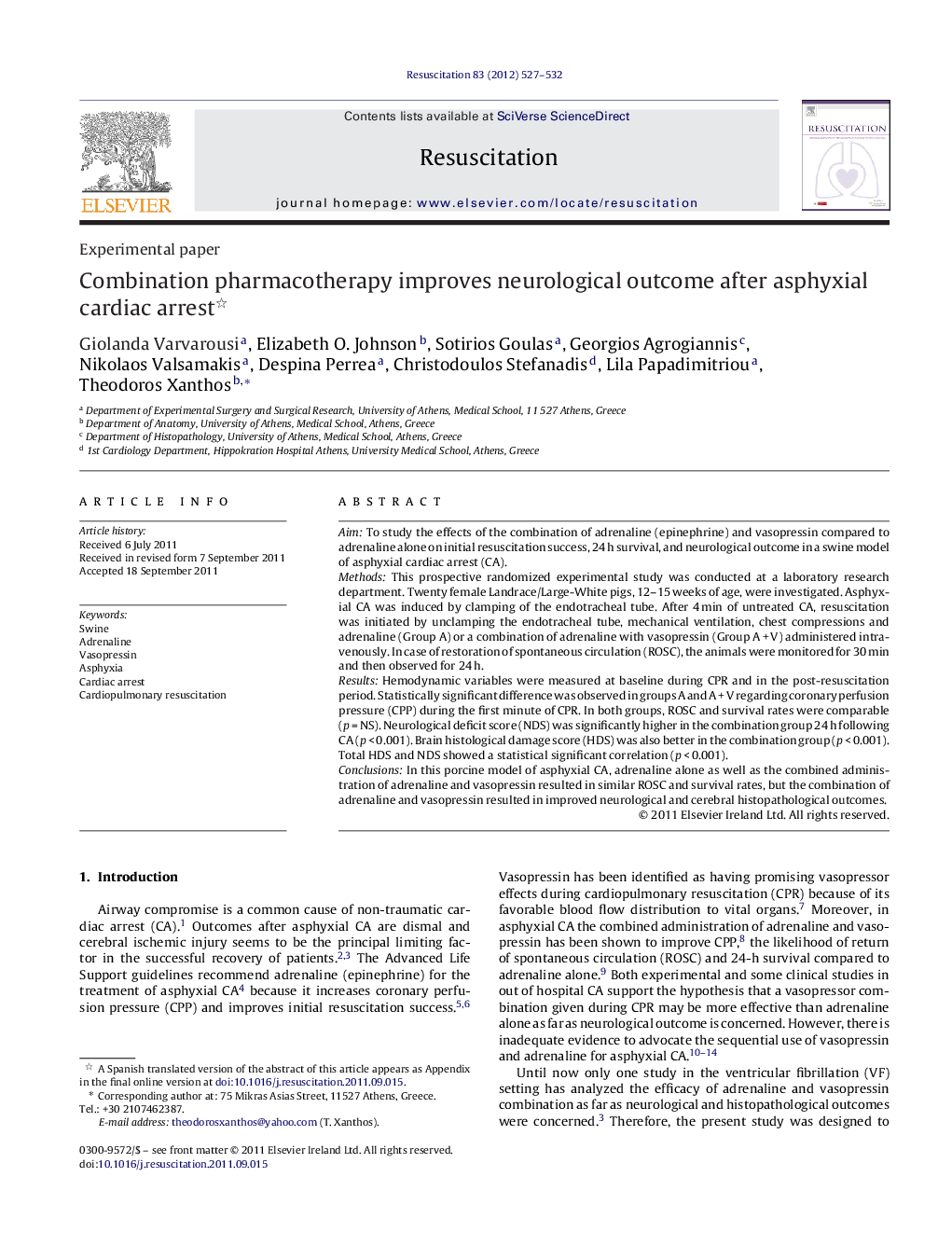| Article ID | Journal | Published Year | Pages | File Type |
|---|---|---|---|---|
| 3008986 | Resuscitation | 2012 | 6 Pages |
AimTo study the effects of the combination of adrenaline (epinephrine) and vasopressin compared to adrenaline alone on initial resuscitation success, 24 h survival, and neurological outcome in a swine model of asphyxial cardiac arrest (CA).MethodsThis prospective randomized experimental study was conducted at a laboratory research department. Twenty female Landrace/Large-White pigs, 12–15 weeks of age, were investigated. Asphyxial CA was induced by clamping of the endotracheal tube. After 4 min of untreated CA, resuscitation was initiated by unclamping the endotracheal tube, mechanical ventilation, chest compressions and adrenaline (Group A) or a combination of adrenaline with vasopressin (Group A + V) administered intravenously. In case of restoration of spontaneous circulation (ROSC), the animals were monitored for 30 min and then observed for 24 h.ResultsHemodynamic variables were measured at baseline during CPR and in the post-resuscitation period. Statistically significant difference was observed in groups A and A + V regarding coronary perfusion pressure (CPP) during the first minute of CPR. In both groups, ROSC and survival rates were comparable (p = NS). Neurological deficit score (NDS) was significantly higher in the combination group 24 h following CA (p < 0.001). Brain histological damage score (HDS) was also better in the combination group (p < 0.001). Total HDS and NDS showed a statistical significant correlation (p < 0.001).ConclusionsIn this porcine model of asphyxial CA, adrenaline alone as well as the combined administration of adrenaline and vasopressin resulted in similar ROSC and survival rates, but the combination of adrenaline and vasopressin resulted in improved neurological and cerebral histopathological outcomes.
